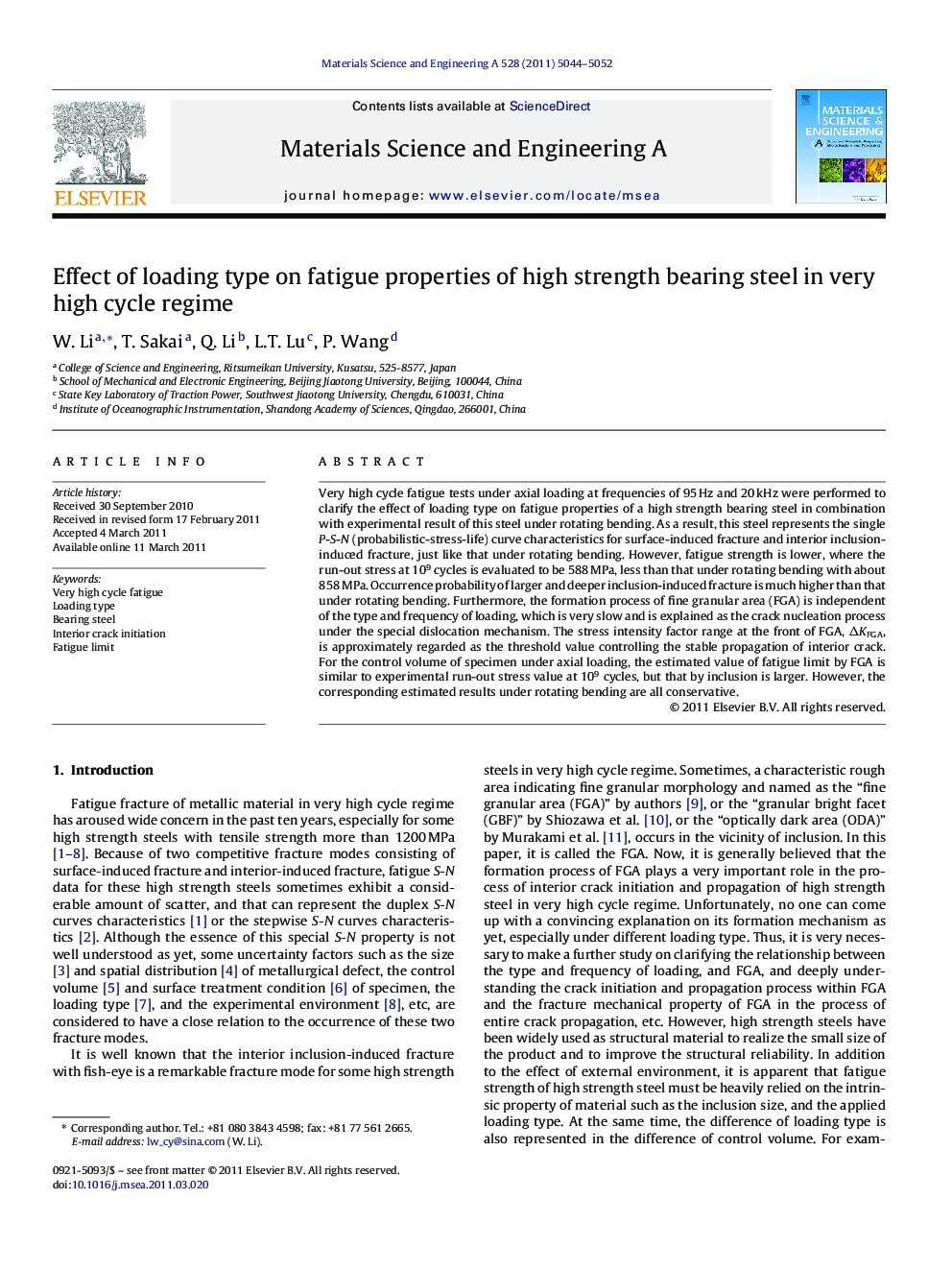| Article ID | Journal | Published Year | Pages | File Type |
|---|---|---|---|---|
| 1578880 | Materials Science and Engineering: A | 2011 | 9 Pages |
Very high cycle fatigue tests under axial loading at frequencies of 95 Hz and 20 kHz were performed to clarify the effect of loading type on fatigue properties of a high strength bearing steel in combination with experimental result of this steel under rotating bending. As a result, this steel represents the single P-S-N (probabilistic-stress-life) curve characteristics for surface-induced fracture and interior inclusion-induced fracture, just like that under rotating bending. However, fatigue strength is lower, where the run-out stress at 109 cycles is evaluated to be 588 MPa, less than that under rotating bending with about 858 MPa. Occurrence probability of larger and deeper inclusion-induced fracture is much higher than that under rotating bending. Furthermore, the formation process of fine granular area (FGA) is independent of the type and frequency of loading, which is very slow and is explained as the crack nucleation process under the special dislocation mechanism. The stress intensity factor range at the front of FGA, ΔKFGA, is approximately regarded as the threshold value controlling the stable propagation of interior crack. For the control volume of specimen under axial loading, the estimated value of fatigue limit by FGA is similar to experimental run-out stress value at 109 cycles, but that by inclusion is larger. However, the corresponding estimated results under rotating bending are all conservative.
► GCr15 steel all represents the single probabilistic S-N curve characteristic under AL and RB. ► Formation of FGA is the crack nucleation process regardless of loading type. ► Evaluation of fatigue limit by FGA under AL is suitable, but that under RB is conservative.
